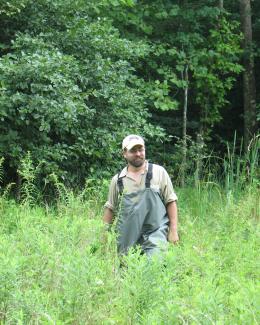Abstract
A one-time 2-hour emulsified vegetable oil (EVO) injection in a fast flowing aquifer decreased U discharge to a stream for over a year. Using a comprehensive biogeochemical model developed in the companion article based on microcosm tests, we approximately matched the observed acetate, nitrate, Fe, U, and sulfate concentrations, and described the major evolution trends of multiple microbial functional groups in the field test. While the lab-determined parameters were generally applicable in the field-scale simulation, the EVO hydrolysis rate constant was estimated to be an order of magnitude greater in the field than in the microcosms. The model predicted substantial biomass (sulfate reducers) and U(IV) accumulation near the injection wells and along the side boundaries of the treatment zone where electron donors (long-chain fatty acids) from the injection wells met electron acceptors (sulfate) from the surrounding environment. While EVO retention and hydrolysis characteristics were expected to control treatment longevity, modeling results indicated that electron acceptors such as sulfate may not only compete for electrons but also play a conducive role in degrading complex substrates and enhancing U(VI) reduction and immobilization. As a result, the spacing of the injection wells could be optimized for effective sustainable bioremediation.



